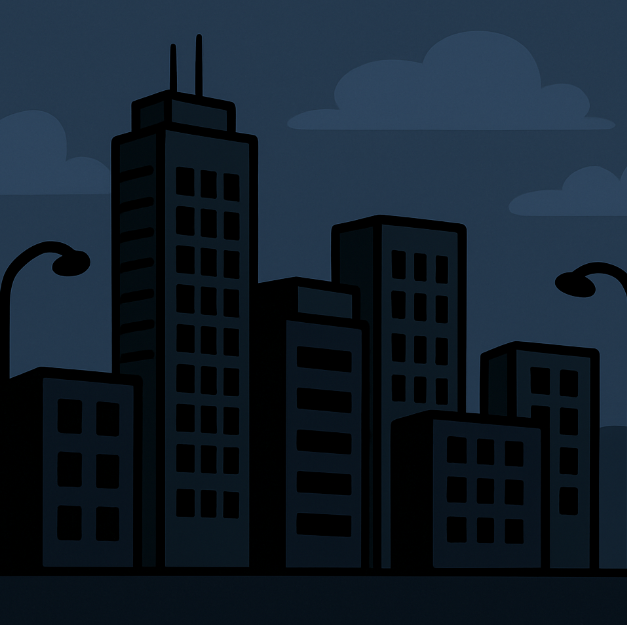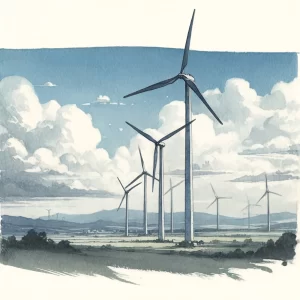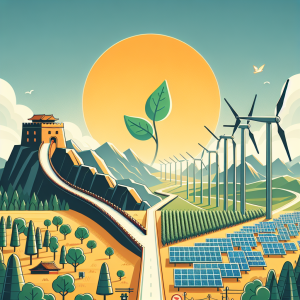
Unequal Blackouts: When Natural Disasters Hit the Grid
Every year, storms, floods, and heatwaves darken millions of homes. But here’s the shocker: not everyone loses power equally. In China, new research shows that poor counties suffer blackouts more often and for longer than their wealthier neighbors. The same could be true wherever vulnerable communities face fragile power systems.
Why This Matters to Everyone
Think of a hospital in a rural town. When the lights flicker off during a storm, oxygen machines stop, medicines spoil, and surgeries halt. Now compare that to a big city hospital with backup generators, stronger grid links, and faster repair crews. Both face the same storm, but the outcomes are worlds apart.
This study quantifies that reality: in poor Chinese counties, natural disasters increased blackout frequency by 5.2% and outage duration by 9%, compared to 3.8% and 5.3% in non-poor counties. That difference may look small on paper—but in real life, it can mean the difference between coping and catastrophe.
The Science Behind the Story
Between 2019 and 2021, researchers tracked over 440,000 power outages across 2,245 counties in China. They paired this with daily data on heatwaves, rainstorms, cold waves, strong winds, wildfires, and landslides. Using statistical models, they asked: how much do disasters raise the risk of blackouts?
The answer: a lot. On average, disasters made outages 4% more frequent and 6% longers41467-025-64012-x. Rainstorms were the worst culprit, driving outage frequency up nearly 8% and duration by 12%.
But here’s where it gets interesting: when the researchers broke down results by poverty level, the inequality was glaring. Poorer counties didn’t just face more outages; they faced longer, harder-to-fix outages. Why? The study points to weaker infrastructure and fewer maintenance staff. In fact, power station workforces in poor counties were less than half the size of those in wealthier areass.
Global Echoes: From India to South Africa
This isn’t just China’s problem. In April 2022, India’s electricity demand hit its highest level in nearly four decades, leading to blackouts of up to eight hours a day in some regions. In South Africa, floods submerged a major power station in 2019, cutting 6,000 megawatts from supply and costing the economy about $70 million per day.
Across the Global South, where grids are already stretched thin, climate-driven disasters are making blackouts longer and costlier. And the poorest communities bear the brunt.
What the Future Holds
The researchers also looked ahead. Using climate models, they forecasted power outages through the year 2099. Under both low- and high-emission scenarios, disaster-driven outages get worse, and the gap between poor and non-poor counties grows by more than 150%
The economic toll? Between 192 and 481 billion RMB (roughly $26–67 billion USD) in projected damages over the century. And that’s just one country.
Why This Inequality Persists
The study points to two main culprits:
- Weaker infrastructure – grids in poor areas are older, less connected, and more fragile.
- Fewer resources – poverty counties had only 0.38 times the repair workforce of wealthier ones.
It’s a bit like comparing two soccer teams in a rainstorm: one has waterproof gear and a full bench of substitutes; the other is barefoot with no backup players. The outcome is predictable.
What Can Be Done
Here are three practical lessons that travel well beyond China:
- Upgrade where it hurts most: Investments should target vulnerable regions, not just cities. Think stronger poles, better lines, and backup systems where outages are longest.
- Train and deploy repair crews locally: More boots on the ground means faster recovery after storms.
- Plan for equity, not averages: National policies often use averages. But when it comes to blackouts, averages hide inequality. A “just grid” means factoring in who suffers most, not just total hours lost.
Why You Should Care
If you’re a researcher, this study offers a framework for measuring outage inequality in your own country. If you’re a policymaker, it shows why climate finance should prioritize poor regions. And if you’re simply someone who’s lived through a blackout, you already know the stakes: power isn’t just convenience—it’s survival.
Let’s Explore Together
This research sparks tough but vital questions:
- Could similar inequalities exist in your country’s grid?
- If you had a say in energy planning, where would you direct investments first?
- What everyday problems—like keeping medicine cold, or running water pumps—would you want science to solve in your community during disasters?
Electricity may be invisible, but when it fails, the inequality it reveals is impossible to ignore. The challenge now is clear: building energy systems that keep the lights on for everyone, not just the lucky few.



